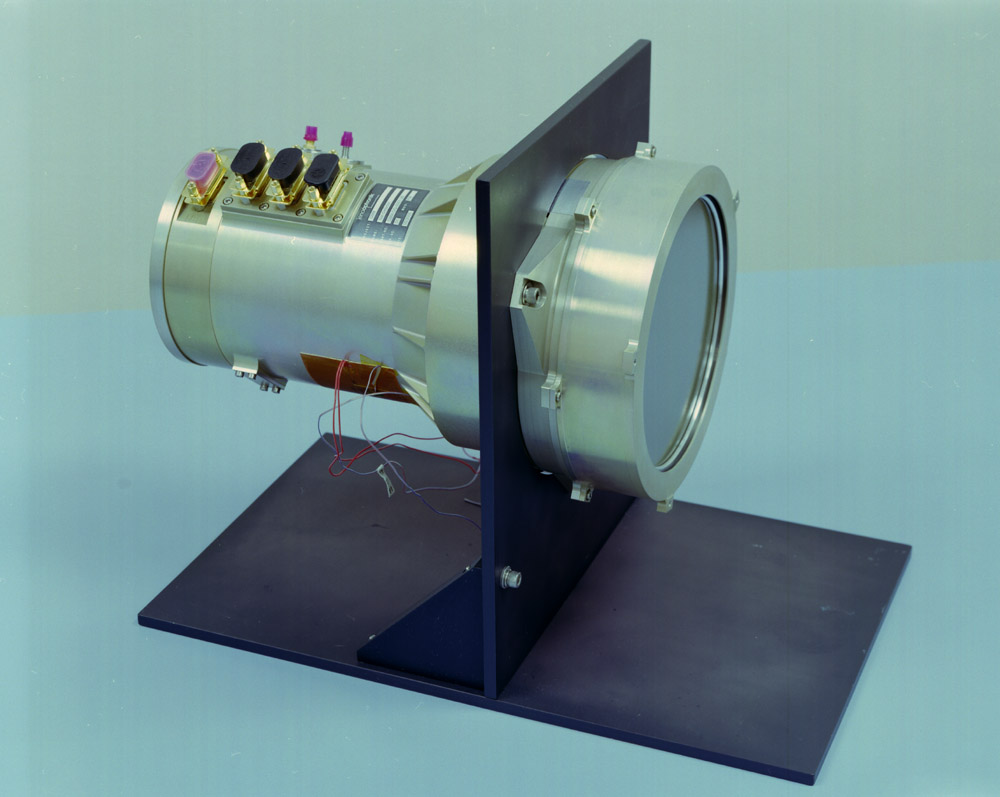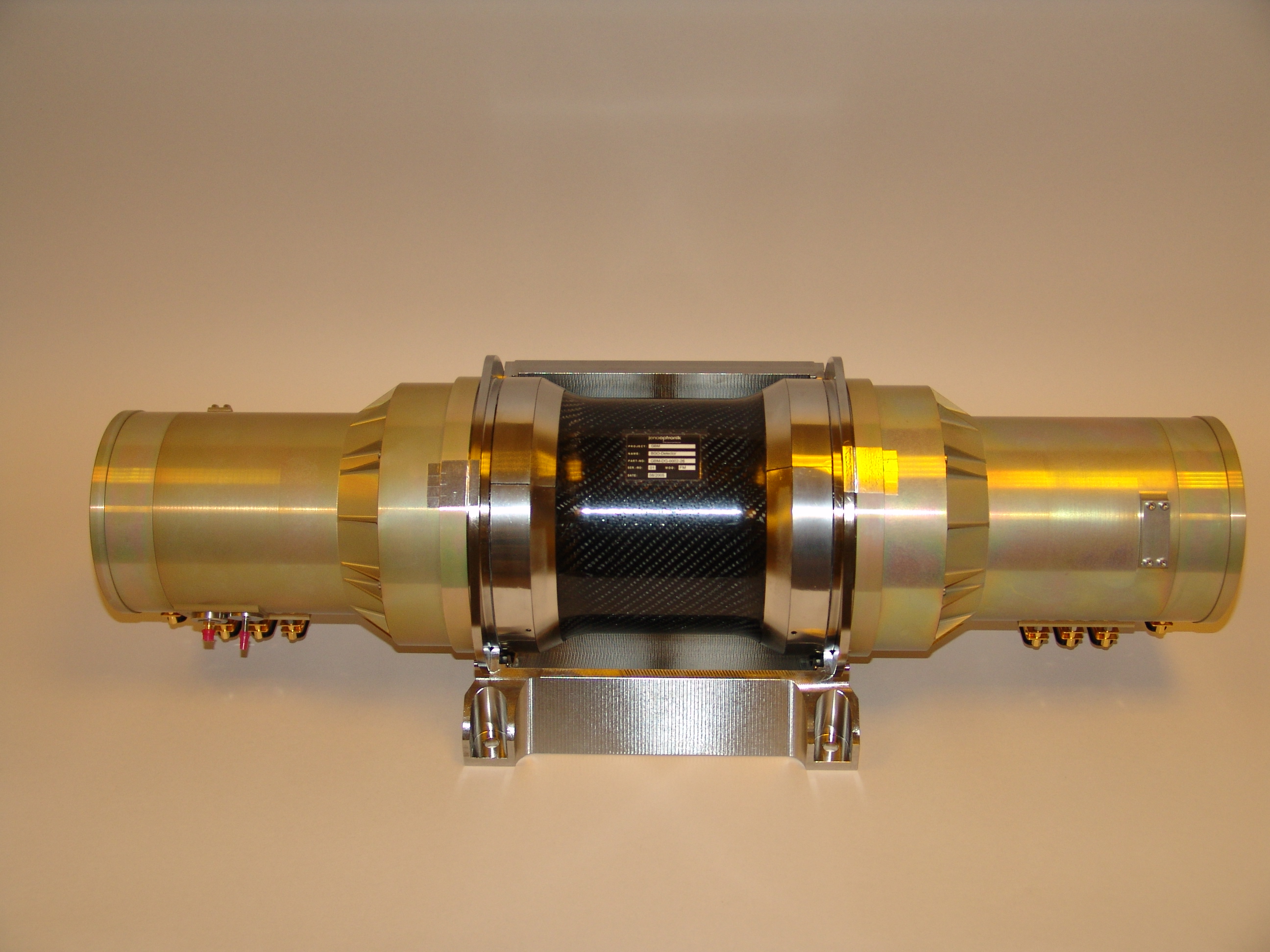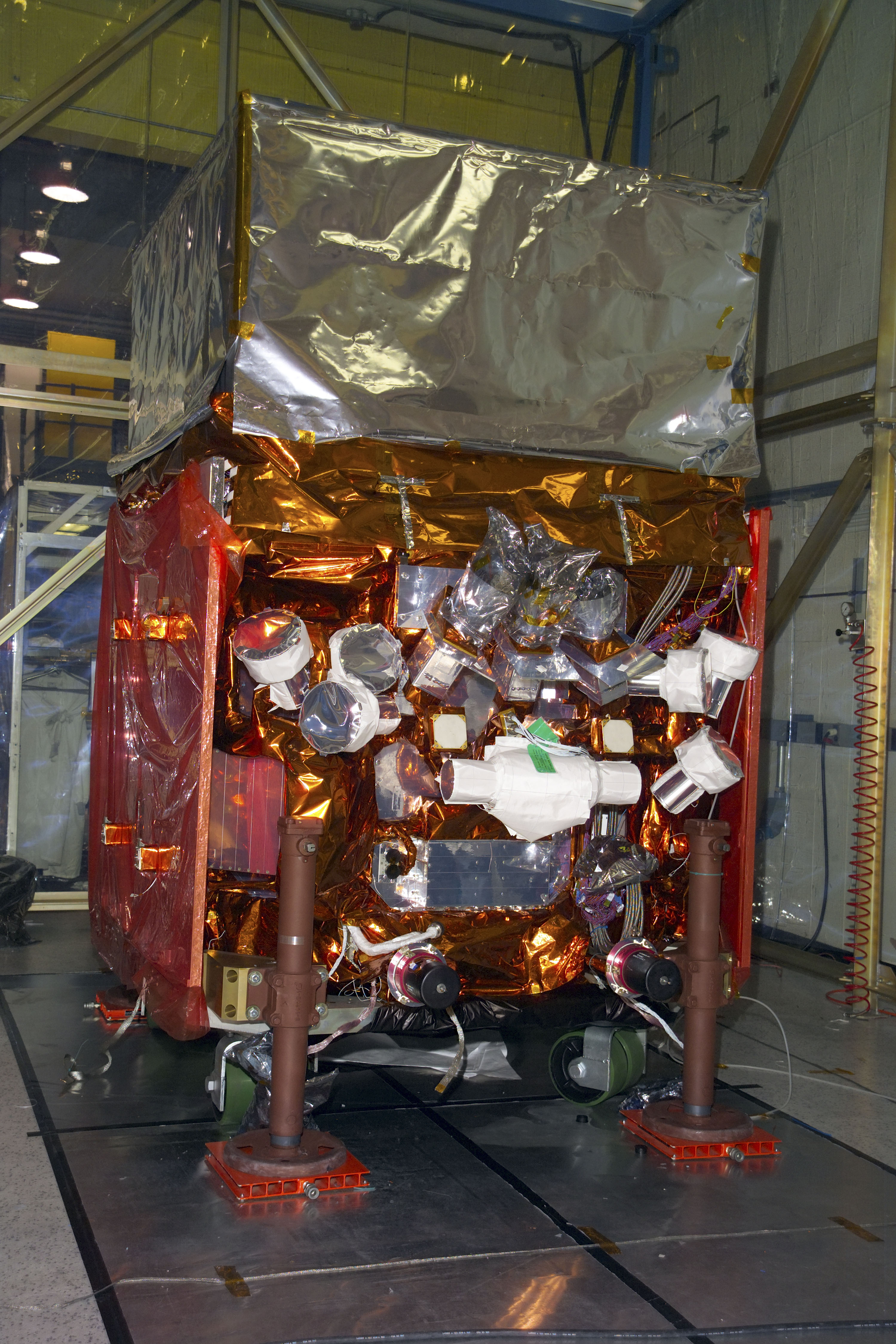Gamma-Ray Burst Monitor
The secondary instrument onboard is the Gamma-ray Burst Monitor, or GBM, built by Marshall Space Flight Center and the Max Planck Institute for Extraterrestrial Physics in Germany. The GBM is designed to observe gamma-ray bursts, which are sudden, brief flashes of gamma rays that occur about once a day at random positions in the sky. The GBM has such a large field-of-view that can see bursts from over two-thirds of the sky at once, providing locations for follow-up observations of these enigmatic explosions.


Fermi's Gamma-ray Burst Monitor consists of two sets of detectors - 12 sodium iodide detectors (left) and two cylindrical bismuth germanate detectors (right). These images show each type of detector in the lab before being mounted onto the Fermi spacecraft. (Credit: Max Planck Institute for Extraterrestrial Physics)
The GBM is composed of two sets of detectors - 12 sodium iodide (NaI) scintillators and two cylindrical bismuth germanate (BGO) detectors. When gamma rays interact with these crystalline detectors, they produce flashes of visible light, which the detector can use to locate the gamma-ray burst on the sky. The GBM works at a lower energy range than the LAT, so together they provide the widest range of energy detection in the gamma-ray regime for any satellite ever built.

The Fermi spacecraft at the Naval Research Laboratory. Some of the Gamma-ray Burst Monitor detectors can be seen on the front side. (Credit: Naval Research Laboratory)


